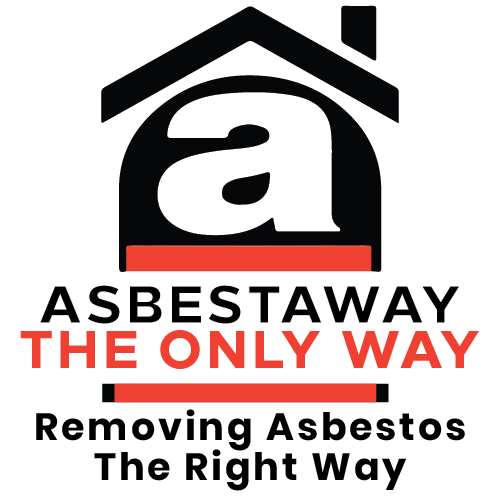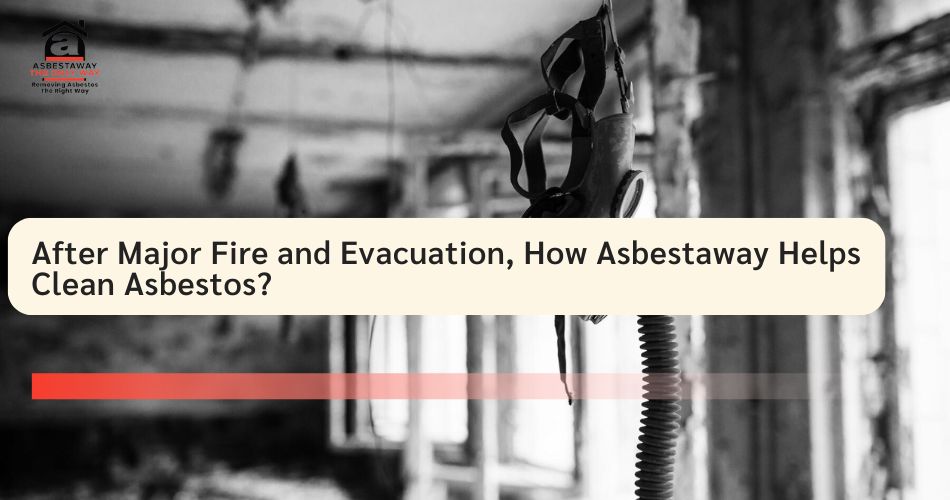Fires, whether natural or man-made, can have devastating impacts on communities, businesses, and homes. Beyond the immediate destruction of property and the threat to human lives, fires can also leave behind hidden, long-term hazards that are often overlooked in the aftermath: asbestos contamination. Asbestos, a naturally occurring mineral that was once widely used in construction and manufacturing, is highly dangerous when disturbed, especially in the wake of a fire.
After a major fire and evacuation, the process of cleaning up becomes even more challenging. Not only do affected areas need to be restored, but health and safety become paramount as the presence of asbestos becomes a significant concern. In this blog, we will explore the role of Asbestaway, a specialist asbestos removal company, in helping to clean and safely remove asbestos in post-fire environments. We will also look at why choosing Asbestaway for your asbestos abatement needs can be the best decision for your home, business, or community.
The Dangers of Asbestos After a Fire
Asbestos is a naturally occurring silicate mineral that was once widely used in construction materials for its heat-resistant properties. Its fibrous structure makes it incredibly durable and effective as a fireproofing material. Unfortunately, asbestos is also extremely hazardous to human health. When asbestos-containing materials (ACMs) are disturbed—such as in the case of a fire—the fibers can become airborne and easily inhaled. This exposure can lead to serious long-term health problems, including:
- Asbestosis – A chronic lung condition caused by the scarring of lung tissue.
- Mesothelioma – A rare but aggressive cancer that affects the lining of the lungs, abdomen, or heart.
- Lung Cancer – Asbestos exposure increases the risk of developing lung cancer, particularly in smokers.
- Pleural Plaques – Thickening or calcification of the pleura (the membranes around the lungs), which is a sign of asbestos exposure.
During a fire, asbestos-containing materials such as insulation, ceiling tiles, floor tiles, roofing shingles, and even fireproofing materials on steel beams can be ignited and release harmful asbestos fibers into the air. This makes it crucial to identify and safely remove any asbestos-containing materials as part of the post-fire recovery process.
The risks of exposure are particularly high in areas where buildings were constructed before the 1980s, as that is when the use of asbestos was largely phased out due to its dangerous health effects.
The Challenges of Asbestos Removal After a Fire
Removing asbestos after a fire poses unique challenges. Fires can not only damage the structure and integrity of asbestos-containing materials but also spread debris and contaminants throughout the building. Here are some of the key challenges involved:
- Structural Damage: A fire can severely compromise the structure of a building, making it difficult to access areas containing asbestos. Damaged materials may need to be carefully handled or removed before asbestos abatement can begin.
- Disrupted Containment: During a fire, any pre-existing asbestos containment measures (such as encapsulation or barriers) can be damaged or destroyed, potentially allowing asbestos fibers to escape into the surrounding environment.
- Airborne Contaminants: Asbestos fibers can become airborne when disturbed, creating a serious health risk to anyone who enters the building during or after a fire. This necessitates thorough air quality monitoring and containment measures during the cleanup process.
- Cross-Contamination: Fires often spread debris far beyond the immediate area of combustion. This can lead to asbestos contamination in unexpected places, such as through HVAC systems or in areas not typically associated with asbestos-containing materials.
- Legal and Regulatory Compliance: Asbestos removal is highly regulated. After a fire, the proper removal and disposal of asbestos are essential to ensure compliance with local, state, and federal laws, as well as to protect workers and the public from exposure.
How Asbestaway Helps Clean Asbestos After a Fire
Asbestaway is a specialist asbestos removal and abatement company with extensive experience in cleaning up asbestos after major fires. Their process involves several key stages that ensure the safe and efficient removal of asbestos, protecting both human health and the environment.
1. Initial Assessment and Inspection
The first step in any asbestos removal process is a thorough assessment of the affected area. Asbestaway’s certified professionals will inspect the premises for signs of asbestos contamination. They will also assess the structural damage caused by the fire, including identifying areas where asbestos-containing materials may have been disturbed.
- Visual Inspection: Asbestaway technicians will conduct a detailed visual inspection of all affected areas, focusing on areas where asbestos was known to be present prior to the fire.
- Air Quality Testing: Airborne asbestos fibers are the most dangerous threat in post-fire situations, so air quality testing will be conducted to measure the concentration of asbestos fibers in the atmosphere.
- Sampling: If necessary, Asbestaway may take samples of suspected asbestos-containing materials to be sent to a laboratory for analysis.
2. Containment and Safety Measures
Once the scope of the asbestos contamination is determined, the next step is to establish containment measures. This is crucial to prevent the spread of asbestos fibers throughout the building and the surrounding environment.
- Isolation of the Area: The affected area will be isolated from the rest of the building using physical barriers, such as plastic sheeting or negative pressure enclosures. This ensures that asbestos fibers do not escape into other areas of the building.
- Negative Pressure Air Systems: Specialized air filtration units equipped with HEPA (High-Efficiency Particulate Air) filters will be used to maintain negative air pressure within the contained space, further preventing any asbestos fibers from escaping into the air.
- Personal Protective Equipment (PPE): All personnel involved in the asbestos removal process will wear full protective gear, including respirators, disposable coveralls, gloves, and boots.
3. Safe Removal of Asbestos
The actual removal of asbestos-containing materials is a delicate and highly regulated process. Asbestaway’s trained professionals will follow strict safety protocols to ensure the safe removal of asbestos without causing any further contamination.
- Wet Removal Method: Asbestos materials will often be wetted to prevent the fibers from becoming airborne during removal. This also helps to minimize the amount of dust generated in the process.
- Careful Disposal: Asbestos-containing debris and materials will be carefully removed and sealed in leak-tight containers for disposal. Asbestaway adheres to all local, state, and federal regulations regarding the transport and disposal of hazardous waste, ensuring that asbestos is disposed of in an authorized landfill.
- Cleaning and Decontamination: After removal, the work area will be thoroughly cleaned using HEPA vacuum cleaners and wet-wiping methods to remove any remaining asbestos dust. All tools and equipment will also be decontaminated.
4. Final Clearance and Air Monitoring
Once the asbestos has been removed and the area cleaned, Asbestaway will conduct a final inspection and clearance process to ensure that the building is safe for reoccupation. This includes:
- Air Sampling: Air samples will be taken from within the contained area and the surrounding environment to ensure that the concentration of airborne asbestos fibers is below the safe limit.
- Visual Inspection: A detailed visual inspection will be conducted to ensure that all asbestos-containing materials have been removed and that the site is fully decontaminated.
Only when these safety measures are in place and clearance is obtained will the building be considered safe for re-entry.
5. Documentation and Compliance
Asbestaway ensures that all necessary documentation is completed for the asbestos removal project. This includes:
- Detailed Reports: A detailed report documenting the entire process will be provided, including the initial assessment, containment measures, removal procedures, and final clearance results.
- Compliance with Regulations: Asbestaway strictly adheres to all local, state, and federal regulations regarding asbestos removal and disposal. They ensure that the work is done in compliance with OSHA (Occupational Safety and Health Administration) and EPA (Environmental Protection Agency) guidelines.
- Certificates of Clearance: Once the area has been cleared, a certificate of clearance will be issued to confirm that the site is safe for reoccupation.
Why Choose Asbestaway?
When it comes to asbestos removal after a fire, choosing the right company is essential for ensuring the safety of everyone involved. Here’s why Asbestaway stands out as a leader in the field of asbestos abatement:
- Expertise and Experience: Asbestaway has years of experience in handling complex asbestos removal projects, including those following fires. Their team is highly trained in both the technical aspects of asbestos abatement and the safety protocols required to protect workers and the public.
- Comprehensive Services: Asbestaway offers a full range of services, from initial inspection and assessment to final clearance and compliance reporting. They handle every aspect of the asbestos removal process, ensuring that nothing is overlooked.
- State-of-the-Art Equipment: Asbestaway uses the latest technology and equipment in asbestos removal, including HEPA filtration systems, specialized containment methods, and advanced air quality monitoring tools.
- Regulatory Compliance: Asbestos removal is highly regulated, and Asbestaway ensures that every project is fully compliant with local, state, and federal laws. They handle all the paperwork, certifications, and documentation to make the process as seamless as possible for their clients.
- Safety First: Asbestaway’s top priority is safety. Their team follows strict safety protocols, ensuring that asbestos fibers do not pose a risk to anyone during the removal process. They use the most advanced protective gear and equipment to minimize the risk of exposure.
- Environmental Responsibility: Asbestaway is committed to protecting the environment. They dispose of asbestos-containing materials in authorized landfills and follow environmentally responsible practices throughout the entire removal process.
Conclusion
Dealing with asbestos after a fire is a complex and dangerous task that requires expertise, experience, and strict adherence to safety regulations. Asbestaway is a trusted name in the asbestos removal industry, offering comprehensive, safe, and efficient services to help property owners and communities recover from the dangers of asbestos contamination. By choosing Asbestaway, you can ensure that your property is not only free from asbestos but also restored to a safe and habitable condition.
If you’ve experienced a fire and are concerned about asbestos contamination, don’t wait. Contact Asbestaway today for a thorough assessment and safe asbestos removal that puts your health and safety first.

